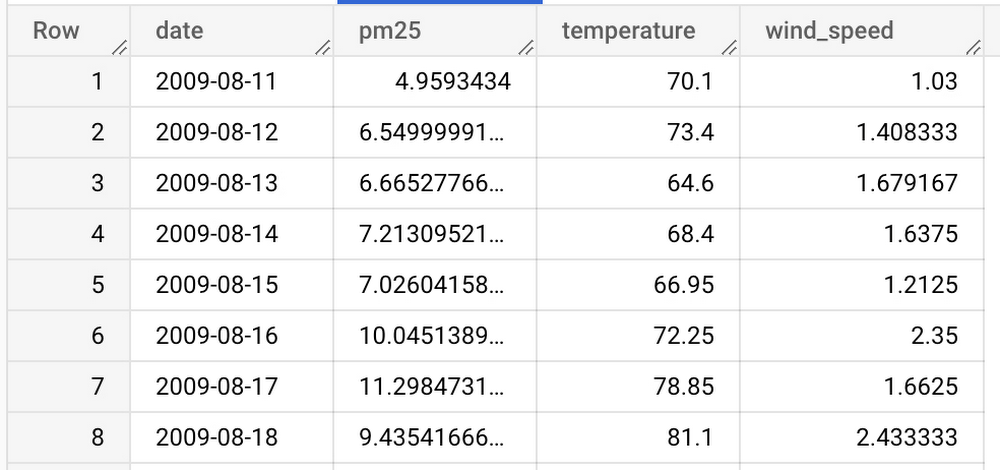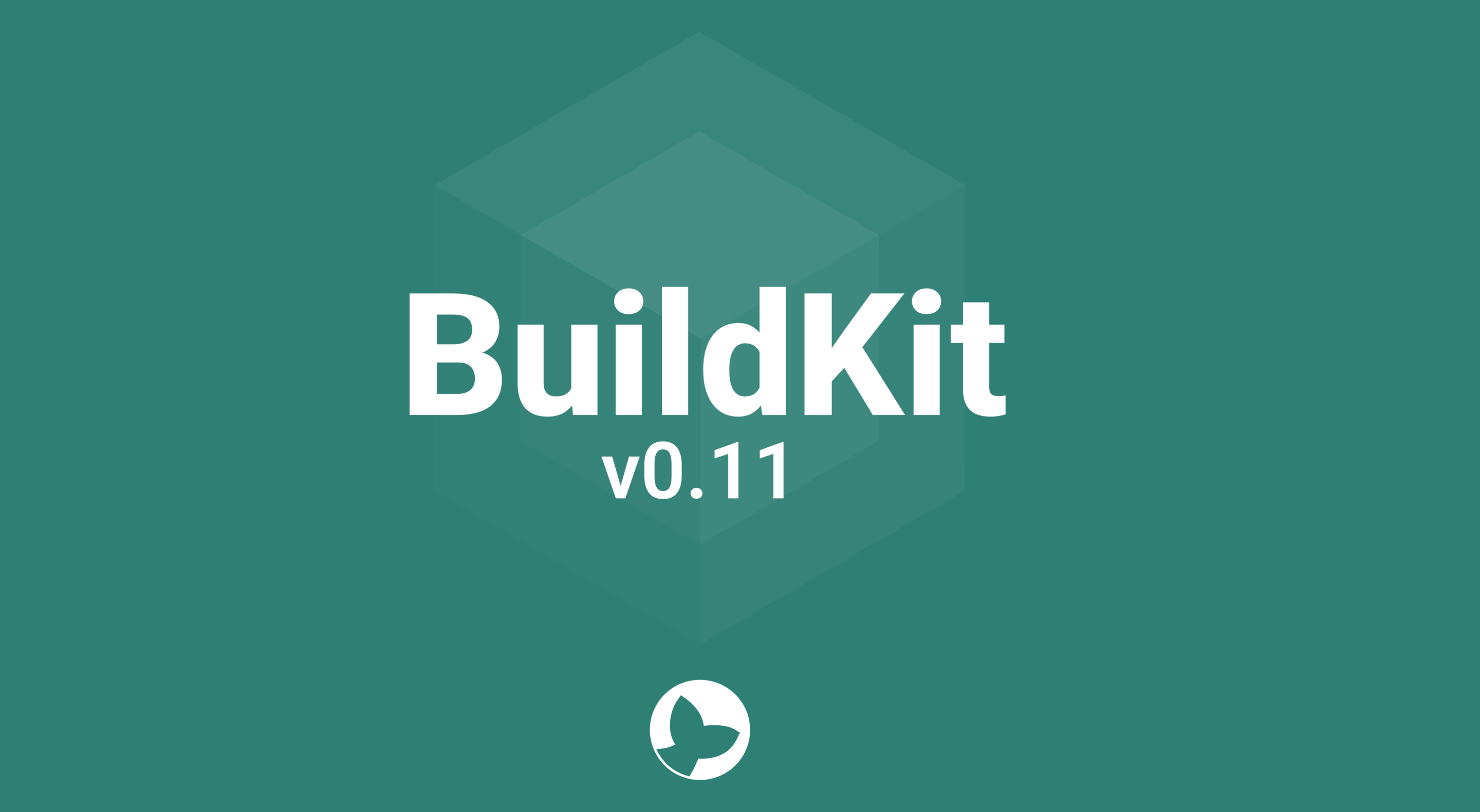BuildKit v0.11 is now available, along with Buildx v0.10 and v1.5 of the Dockerfile syntax. We’ve released new features, bug fixes, performance improvements, and improved documentation for all of the Docker Build tools.Let’s dive into what’s new! We’ll cover the highlights, but you can get the whole story in the full changelogs.
In this post:1. SLSA Provenance2. Software Bill of Materials3. SOURCE_DATE_EPOCH4. OCI image layouts as named contexts5. Cloud cache backends6. OCI Image annotations7. Build inspection8. Bake features
1. SLSA Provenance
BuildKit can now create SLSA Provenance attestation to trace the build back to source and make it easier to understand how a build was created. Images built with new versions of Buildx and BuildKit include metadata like links to source code, build timestamps, and the materials used during the build. To attach the new provenance, BuildKit now defaults to creating OCI-compliant images.
Although docker buildx will add a provenance attestation to all new images by default, you can also opt into more detail. These additional details include your Dockerfile source, source maps, and the intermediate representations used by BuildKit. You can enable all of these new provenance records using the new –provenance flag in Buildx:
$ docker buildx build –provenance=true -t <myorg>/<myimage> –push .
Or manually set the provenance generation mode to either min or max (read more about the different modes):
$ docker buildx build –provenance=mode=max -t <myorg>/<myimage> –push .
You can inspect the provenance of an image using the imagetools subcommand. For example, here’s what it looks like on the moby/buildkit image itself:
$ docker buildx imagetools inspect moby/buildkit:latest –format ‘{{ json .Provenance }}’
{
"linux/amd64": {
"SLSA": {
"buildConfig": {
You can use this provenance to find key information about the build environment, such as the git repository it was built from:
$ docker buildx imagetools inspect moby/buildkit:latest –format ‘{{ json (index .Provenance "linux/amd64").SLSA.invocation.configSource }}’
{
"digest": {
"sha1": "830288a71f447b46ad44ad5f7bd45148ec450d44"
},
"entryPoint": "Dockerfile",
"uri": "https://github.com/moby/buildkit.git#refs/tags/v0.11.0"
}
Or even the CI job that built it in GitHub actions:
$ docker buildx imagetools inspect moby/buildkit:latest –format ‘{{ (index .Provenance "linux/amd64").SLSA.builder.id }}’
https://github.com/moby/buildkit/actions/runs/3878249653
Read the documentation to learn more about SLSA Provenance attestations or to explore BuildKit’s SLSA fields.
2. Software Bill of Materials
While provenance attestations help to record how a build was completed, Software Bill of Materials (SBOMs) record what components are used. This is similar to tools like docker sbom, but, instead of requiring you to perform your own scans, the author of the image can build the results into the image.
You can enable built-in SBOMs with the new –sbom flag in Buildx:
$ docker buildx build –sbom=true -t <myorg>/<myimage> –push .
By default, BuildKit uses docker/buildkit-syft-scanner (powered by Anchore’s Syft project) to build an SBOM from the resulting image. But any scanner that follows the BuildKit SBOM scanning protocol can be used here:
$ docker buildx build –sbom=generator=<custom-scanner> -t <myorg>/<myimage> –push .
Similar to SLSA provenance, you can use imagetools to query SBOMs attached to images. For example, if you list all of the discovered dependencies used in moby/buildkit, you get this:
$ docker buildx imagetools inspect moby/buildkit:latest –format ‘{{ range (index .SBOM "linux/amd64").SPDX.packages }}{{ println .name }}{{ end }}’
github.com/Azure/azure-sdk-for-go/sdk/azcore
github.com/Azure/azure-sdk-for-go/sdk/azidentity
github.com/Azure/azure-sdk-for-go/sdk/internal
github.com/Azure/azure-sdk-for-go/sdk/storage/azblob
…
Read the SBOM attestations documentation to learn more.
3. SOURCE_DATE_EPOCH
Getting reproducible builds out of Dockerfiles has historically been quite tricky — a full reproducible build requires bit-for-bit accuracy that produces the exact same result each time. Even builds that are fully deterministic would get different timestamps between runs.
The new SOURCE_DATE_EPOCH build argument helps resolve this, following the standardized environment variable from the Reproducible Builds project. If the build argument is set or detected in the environment by Buildx, then BuildKit will set timestamps in the image config and layers to be the specified Unix timestamp. This helps you get perfect bit-for-bit reproducibility in your builds.
SOURCE_DATE_EPOCH is automatically detected by Buildx from the environment. To force all the timestamps in the image to the Unix epoch:
$ SOURCE_DATE_EPOCH=0 docker buildx build -t <myorg>/<myimage> .
Alternatively, to set it to the timestamp of the most recent commit:
$ SOURCE_DATE_EPOCH=$(git log -1 –pretty=%ct) docker buildx build -t <myorg>/<myimage> .
Read the documentation to find out more about how BuildKit handles SOURCE_DATE_EPOCH.
4. OCI image layouts as named contexts
BuildKit has been able to export OCI image layouts for a while now. As of v0.11, BuildKit can import those results again using named contexts. This makes it easier to build contexts entirely locally — without needing to push intermediate results to a registry.
For example, suppose you want to build your own custom intermediate image based on Alpine that contains some development tools:
$ docker buildx build . -f intermediate.Dockerfile –output type=oci,dest=./intermediate,tar=false
This builds the contents of intermediate.Dockerfile and exports it into an OCI image layout into the intermediate/ directory (using the new tar=false option for OCI exports). To use this intermediate result in a Dockerfile, refer to it using any name you like in the FROM statement in your main Dockerfile:
FROM base
RUN … # use the development tools in the intermediate image
You can then connect this Dockerfile to your OCI layout using the new oci-layout:// URI schema for the –build-context flag:
$ docker buildx build . -t <myorg>/<myimage> –build-context base=oci-layout://intermediate
Instead of resolving the image base to Docker Hub, BuildKit will instead read it from oci-layout://intermediate in the current directory, so you don’t need to push the intermediate image to a remote registry to be able to use it.
Refer to the documentation to find out more about using oci-layout:// with the –build-context flag.
5. Cloud cache backends
To get good build performance when building in ephemeral environments, such as CI pipelines, you need to store the cache in a remote backend. The newest release of BuildKit supports two new storage backends: Amazon S3 and Azure Blob Storage.
When you build images, you can provide the details of your S3 bucket or Azure Blob store to automatically store your build cache to pull into future builds. This build cache means that even though your CI or local runners might be destroyed and recreated, you can still access your remote cache to get quick builds when nothing has changed.
To use the new backends, you can specify them using the –cache-to and –cache-from flags:
$ docker buildx build –push -t <user>/<image>
–cache-to type=s3,region=<region>,bucket=<bucket>,name=<cache-image>[,parameters…]
–cache-from type=s3,region=<region>,bucket=<bucket>,name=<cache-image> .
$ docker buildx build –push -t <registry>/<image>
–cache-to type=azblob,name=<cache-image>[,parameters…]
–cache-from type=azblob,name=<cache-image>[,parameters…] .
You also don’t have to choose between one cache backend or the other. BuildKit v0.11 supports multiple cache exports at a time so you can use as many as you’d like.
Find more information about the new S3 backend in the Amazon S3 cache and the Azure Blob Storage cache backend documentation.
6. OCI Image annotations
OCI image annotations allow attaching metadata to container images at the manifest level. They’re an alternative to labels that are more generic, and they can be more easily attached to multi-platform images.
All BuildKit image exporters now allow setting annotations to the image exporters. To set the annotations of your choice, use the –output flag:
$ docker buildx build …
–output "type=image,name=foo,annotation.org.opencontainers.image.title=Foo"
You can set annotations at any level of the output, for example, on the image index:
$ docker buildx build …
–output "type=image,name=foo,annotation-index.org.opencontainers.image.title=Foo"
Or even set different annotations for each platform:
$ docker buildx build …
–output "type=image,name=foo,annotation[linux/amd64].org.opencontainers.image.title=Foo,annotation[linux/arm64].org.opencontainers.image.title=Bar"
You can find out more about creating OCI annotations on BuildKit images in the documentation.
7. Build inspection with –print
If you are starting in a codebase with Dockerfiles, understanding how to use them can be tricky. Buildx supports the new –print flag to print details about a build. This flag can be used to get quick and easy information about required build arguments and secrets, and targets that you can build.
For example, here’s how you get an outline of BuildKit’s Dockerfile:
$ BUILDX_EXPERIMENTAL=1 docker buildx build –print=outline https://github.com/moby/buildkit.git
TARGET: buildkit
DESCRIPTION: builds the buildkit container image
BUILD ARG VALUE DESCRIPTION
RUNC_VERSION v1.1.4
ALPINE_VERSION 3.17
BUILDKITD_TAGS defines additional Go build tags for compiling buildkitd
BUILDKIT_SBOM_SCAN_STAGE true
We can also list all the different targets to build:
$ BUILDX_EXPERIMENTAL=1 docker buildx build –print=targets https://github.com/moby/buildkit.git
TARGET DESCRIPTION
alpine-amd64
alpine-arm
alpine-arm64
alpine-s390x
Any frontend that implements the BuildKit subrequests interface can be used with the buildx –print flag. They can even define their own print functions, and aren’t just limited to outline or targets.
The –print feature is still experimental, so the interface may change, and we may add new functionality over time. If you have feedback, please open an issue or discussion on the docker/buildx GitHub, we’d love to hear your thoughts!
8. Bake features
The Bake file format for orchestrating builds has also been improved.
Bake now supports more powerful variable interpolation, allowing you to use fields from the same or other blocks. This can reduce duplication and make your bake files easier to read:
target "foo" {
dockerfile = target.foo.name + ".Dockerfile"
tags = [target.foo.name]
}
Bake also supports null values for build arguments and allows labels to use the defaults set in your Dockerfile so your bake definition doesn’t override those:
variable "GO_VERSION" {
default = null
}
target "default" {
args = {
GO_VERSION = GO_VERSION
}
}
Read the Bake documentation to learn more.
More improvements and bug fixes
In this post, we’ve only scratched the surface of the new features in the latest release. Along with all the above features, the latest releases include quality-of-life improvements and bug fixes. Read the full changelogs to learn more:
BuildKit v0.11 changelog
Buildx v0.10 changelog
Dockerfile v1.5 changelog
We welcome bug reports and contributions, so if you find an issue in the releases, let us know by opening a GitHub issue or pull request, or get in contact in the #buildkit channel in the Docker Community Slack.
Quelle: https://blog.docker.com/feed/




